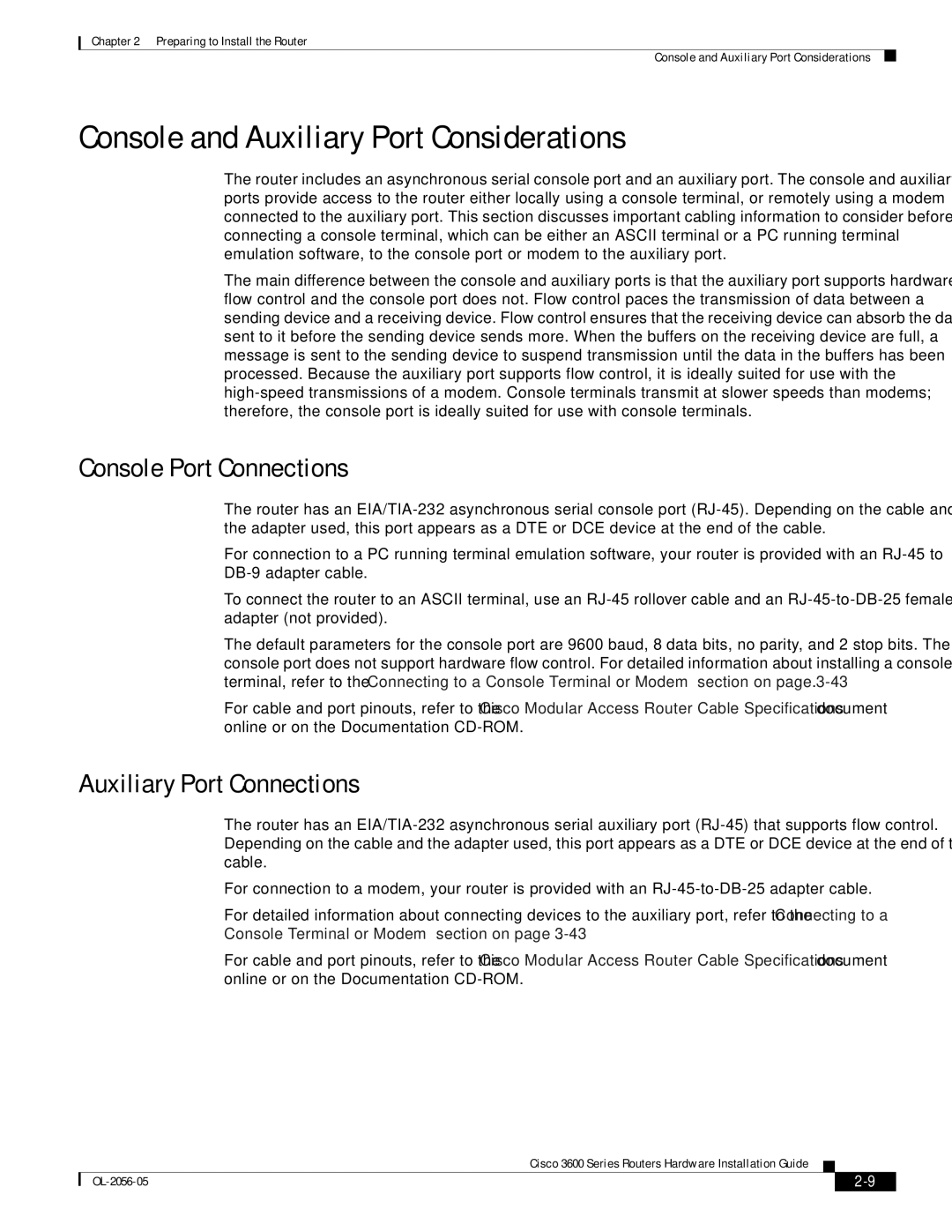
Chapter 2 Preparing to Install the Router
Console and Auxiliary Port Considerations
Console and Auxiliary Port Considerations
The router includes an asynchronous serial console port and an auxiliary port. The console and auxiliary ports provide access to the router either locally using a console terminal, or remotely using a modem connected to the auxiliary port. This section discusses important cabling information to consider before connecting a console terminal, which can be either an ASCII terminal or a PC running terminal emulation software, to the console port or modem to the auxiliary port.
The main difference between the console and auxiliary ports is that the auxiliary port supports hardware flow control and the console port does not. Flow control paces the transmission of data between a sending device and a receiving device. Flow control ensures that the receiving device can absorb the data sent to it before the sending device sends more. When the buffers on the receiving device are full, a message is sent to the sending device to suspend transmission until the data in the buffers has been processed. Because the auxiliary port supports flow control, it is ideally suited for use with the
Console Port Connections
The router has an
For connection to a PC running terminal emulation software, your router is provided with an
To connect the router to an ASCII terminal, use an
The default parameters for the console port are 9600 baud, 8 data bits, no parity, and 2 stop bits. The console port does not support hardware flow control. For detailed information about installing a console terminal, refer to the “Connecting to a Console Terminal or Modem” section on page
For cable and port pinouts, refer to the Cisco Modular Access Router Cable Specifications document online or on the Documentation
Auxiliary Port Connections
The router has an
For connection to a modem, your router is provided with an
For detailed information about connecting devices to the auxiliary port, refer to the “Connecting to a Console Terminal or Modem” section on page
For cable and port pinouts, refer to the Cisco Modular Access Router Cable Specifications document online or on the Documentation
Cisco 3600 Series Routers Hardware Installation Guide
|
| ||
|
|
